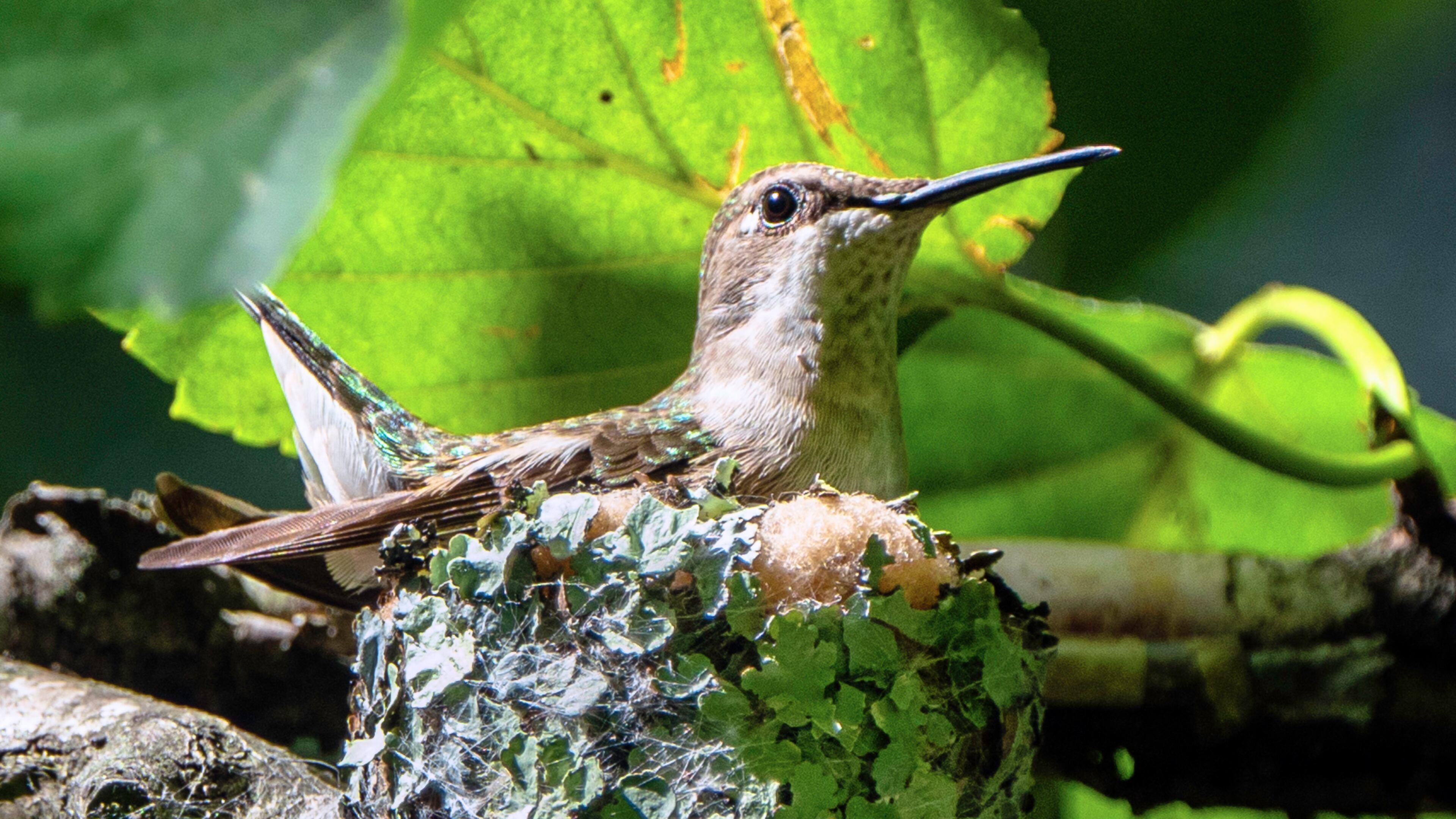Wild Georgia: A brief romance, then hummingbirds go separate ways

Since late March, male ruby-throated hummingbirds have been returning to Georgia from winter grounds in Mexico and Central America to stake out their breeding territories for the spring nesting season — a week or two ahead of the females’ arrival.
Now, the females are streaming in, triggering frenzy among the males to woo and mate with them — and then abandon them. Here’s a look at ruby-throats’ nesting behavior:
The males’ territories are some 50 feet apart or more and intensely defended from other males. If another male intrudes, the defender emits high-pitched warning squeaks and flashes his feathers to make the trespasser flee.
If he doesn’t, the defender squeaks louder and may chase the offender. It can get physical — the defender may jab the trespasser with his bill and strike with his feet.
A female entering a male’s territory is treated differently. Instead of evicting her, he will try to woo her in a series of spectacular displays — flying upward some 50 feet and then diving at top speed, pulling up at the last second to complete a U-shaped pattern. If the female approves, copulation occurs. The wooing and mating last only a few minutes; then, the male abandons her and perhaps tries to find another female to impregnate.
A pregnant female’s nesting instinct kicks in. She’ll weave plant parts, spiderwebs, lichens and other material into a cup-shaped nest about 1.5 inches in diameter, attached to an overhanging tree branch. She’ll lay two white, pea-size eggs, incubate them and feed the hatchlings by regurgitating a mixture of tiny insects, nectar and other food into their mouths several times per day — all without a male’s help.
After her babies fledge, another male may impregnate her, and she’ll raise another brood by herself. By August, nesting is over and ruby-throats will head back south for the winter — flying nonstop some 500 miles over the open Gulf of Mexico to reach the Yucatan Peninsula.
IN THE SKY: From David Dundee, Tellus Science Museum astronomer: The moon is in last quarter. Venus, Mars, Jupiter and Saturn are low in the east before sunrise. Appearing near the moon will be Saturn on Monday morning; Mars, Tuesday morning, and Venus and Jupiter, Wednesday morning. Meteors of the Lyrid meteor shower may still appear this weekend in the northeastern sky.
Charles Seabrook can be reached at charles.seabrook@yahoo.com.

